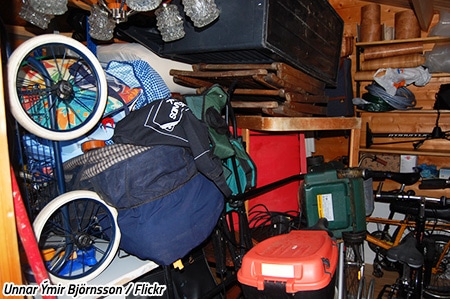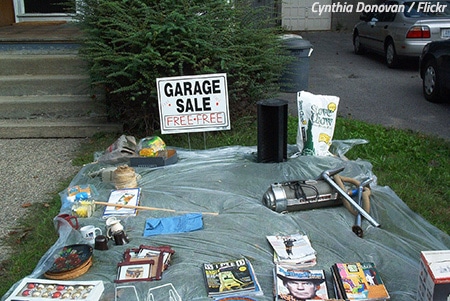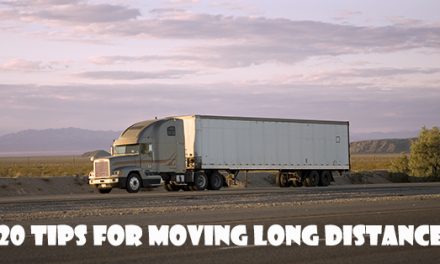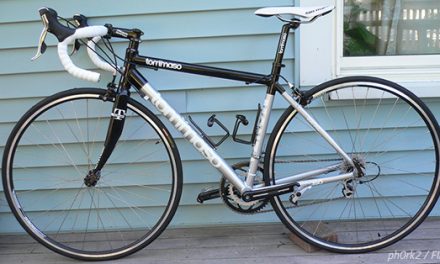 It’s hardly a surprise that with so many things to take care of, the process of moving house often proves to be more complicated than you have originally planned.
It’s hardly a surprise that with so many things to take care of, the process of moving house often proves to be more complicated than you have originally planned.
Add the constantly increasing move-related stress prior to your moving day, and all of a sudden, you get a highly volatile situation where the number of unforced and forced moving errors can easily skyrocket.
To help you have a stress-free move from start to finish, take a look at the top 10 common mistakes when packing for a move – costly mistakes which you must avoid in order to keep things under control.
Mistake #1: To start packing without a good plan
One of the most common mistakes when packing for a move is to just start boxing any household items you can get hold of without having a clear packing strategy in your head or written down on a piece of paper.
The major problem with packing up your home on a random principle is that although it feels like you’ve initiated the most time-consuming process a residential move can kindly offer, in reality, chances are that you’ll be only wasting precious time. And time is exactly what you don’t have the luxury of wasting when getting ready to move out.
The proper course of action here is to create a packing timeline for moving which you should consult frequently and stick to diligently in order to increase significantly your packing productivity. Make sure you also prioritize and customize your packing tasks as well.
Packing Timeline For Moving: Your Packing Checklist
Mistake #2: To leave packing jobs for moving day
Later is such a dangerous word, especially when you’re about to pack up your home for a move. Of all common packing mistakes, a classic example is to leave most of the packing tasks for later in order to take care of a more “urgent” job.
The thing to understand here is that, regardless of how much time you have left until the Big day, the more you tend to procrastinate packing, the harder it will be for you to actually begin the process. Procrastination will lead to stress, stress will lead to panic, and panic will lead to bad decisions.
Write this down or just make sure you remember this fundamental move-related concept: the only way to get something done the right way is to start working on it right away.
In other words, initiate the arduous packing process the moment your house move is confirmed.
What to pack FIRST when moving
Mistake #3: To think that sorting your items is a waste of time

Still think pre-move sorting is a waste of time?
Speaking of common moving mistakes when packing for a move, another blunder when moving house is to assume that the required step of sorting household items can be skipped without any serious consequences.
Of course, there’s a good reason why some people get the impression that they will save a lot of valuable time by packing everything they own now and sorting it out later when they arrive in their new homes.
There’s only one big problem with this line of thinking – it is completely wrong.
In reality, such a packing strategy will not only waste more of your time /packing more items will require more time/, but it will also hurt your budget badly /the more your final shipment weighs, the more money you will pay for its transportation/.
So, don’t skip the pre-move sorting task. In the end, you should take with you only the things you will really need in the foreseeable future.
How to get rid of unwanted things when moving
Mistake #4: To assume quality packing supplies are overrated
There are plenty of mistakes to avoid when packing for a move, and assuming that you can do without top-quality packing materials is probably the most “innocent” error you can ever make during your pre-move preparations.
The main problem, however, is that often a single misjudgment leads to another, and pretty soon you may become confident that you can manage the packing job with just any supplies you can lay your hands on. Which, in turn, will compromise the packing safety of your entire operation.
For example, don’t use cardboard boxes that are visibly in bad shape as they can easily break under the weight of their own contents and cause you unscheduled headaches. While acquiring your packing materials, make sure all of them are clean, dry, sturdy, and have safe and confirmed origins.
If you can afford it, do the right thing and purchase most of the required supplies brand-new – from a local moving company, a home depot store, or online.
How to get free or cheap boxes for moving
Mistake #5: To presume you won’t need an essentials box
A packing mistake even super-smart people make when moving house is to forget that once they place their possessions into moving containers, they will no longer have access to them until after they are delivered successfully inside their new homes. And without convenient access to a number of really essential household items, things can suddenly become trickier than usual and stress levels can reach unhealthy limits.
Avoid the moving mistake of not packing an essentials box that will contain your absolute life-savers. This is especially important when you have a baby or a toddler, and a long road trip is scheduled ahead of the family.
Here are a few ideas of what you should consider packing up inside your survival kit: bottled water and sandwiches, prescription medications, kitchen utensils, spare clothes, basic toiletries, a set of hand tools, toys, and specific items when moving house with small children and/or pets.
How to Pack an Open First Box When Moving
Mistake #6: To “save” time by overfilling your boxes

There are always good options to declutter your home before the move and lower the relocation costs at the same time.
Regardless of what priceless packing tips you’ve read online or heard from friends with considerable moving experience, the worst packing mistakes to avoid at all costs are all connected to safety – safety both for all participants in the move and the actual belongings that are being moved to a new home.
All things considered, spending more money than planned or losing extra hours while placing your stuff inside suitable containers cannot possibly match a heartbreaking moving accident due to compromised packing safety.
Here’s a quick packing trick that can save you plenty of troubles: use smaller moving boxes for heavy items and bigger containers for lighter possessions.
Never go the other way round as cardboard boxes and human backs both have breaking limits. Remember to not overfill your packing boxes and keep a reasonable weight limit of a single packed container of around 40-45 pounds, especially when you’re packing books.
How to survive Moving day in 20 steps
Mistake #7: To leave empty spaces in your moving boxes
Another safety-related packing mistake that people tend to make is to leave empty spaces inside the packed cardboard boxes when packing breakable items.
This qualifies as a packing error not because the inside of the container won’t be fully utilized, but because any available room that is not taken care of through suitable filling and padding materials can cause any fragile objects to come into contact with one another. As a result, such undesirable contacts can only lead to chipped, broken or ruined highly-delicate and breakable pieces.
So, don’t skimp on padding and filling supplies!
Use crumpled pieces of packing paper or newspapers, as well as sheets of bubble wrap or pieces of old but clean clothing (bath towels are the best!) to fill in any remaining spaces inside a box and thus, immobilize its contents. A good way to test whether or not you’ve done a good job packing your breakables inside a moving box is to lift the container and shake it gently. If you hear a (muffled) clanking sound or feel that something is moving inside, start over.
Mistake #8: To go ahead and pack items you shouldn’t have

Before packing up your favorite lawnmower, make sure you siphon out the fuel from its tank.
One of the most common packing mistakes when moving house is to prepare certain household goods for transportation only to learn later that your movers won’t load them on their truck due to their hazardous nature. Needless to say, packing non-allowable items will only lead to loads of wasted time and effort.
Avoid this rookie moving mistake by asking your moving company to give you the full list of goods forbidden for transportation. Once you have that checklist in your hands, you’ll be able to figure out what to do with each individual item well before your move-out date.
In general, such non-allowables fall into 4 categories:
- Hazardous goods: flammable, explosive or corrosive substances that can hurt a person or damage the moving vehicle or other possessions in transit.
- Perishables: mostly perishable foods that can go bad on the road or ruin other goods.
- Pets: it’s up to you to transport your pet(s) safely to your new home.
- Plants: your leafy friends can be too fragile to survive a relocation trip. Consider entrusting them to a good friend to take care of them for you.
Mistake #9: To believe your memory is too good to label your boxes
Are you in the mood to lose hours of valuable post-relocation time searching through piles of freshly-delivered moving boxes only to find your bedding? We thought so.
Interestingly enough, some common packing mistakes when moving house come as a result of overconfidence. A great example of such a moving error will be to assume that you have infallible memory and will somehow manage to remember what’s inside each box without having to label the containers. Even if you are truly proud of your memorizing skills, it’s good to remember that the chaotic period of moving from one home to another is notorious for playing tricks with people’s minds.
Yes, failure to label your boxes correctly is a good example of moving mistakes you don’t have to make. Just take a black marker pen and mark each packed container with its detailed contents, destination room, and special handling instructions both for yourself and for your helpers. The usage of colored labels for each individual destination room is also encouraged.
How to Label Moving Boxes Like A Pro
Mistake #10. To assume you won’t need any packing help
Of all the mistakes to avoid when packing for a move, the assumption that you can pack up your entire home on your own is probably the judgment error that can hurt you the most.
How much time you will actually need to bring the packing marathon to a successful end will surely depend on how many items you’re planning to take with you and how well you are prepared prior to the initiation of the most time consuming pre-move task of them all.
However, no matter how you look at the tough job ahead, the best way to pack for a move is to have a few extra pairs of helping hands. That way, you are guaranteed that no cardboard box will be left unpacked prior to moving day.
Yes, the idea of inviting your friends to a packing party can work out great in the end – you’ll see your pals one last time before you move out, and of course – you won’t need to pay professional packers to help you pack, protect, and box your earthly possessions. But what if your friends all get too busy right when you need their assistance the most?
How to get friends to help you move
Don’t make the moving mistake of assuming that professional packing services are too expensive to afford. As long as you pack whatever you can by yourself and leave to the pros only the things are either too fragile or too large, or both, then you may be pleasantly surprised by the affordability of the extra service offered by full-service moving companies.
Request cost estimates from experienced and trustworthy movers, compare the quotes carefully, and choose the best offer in terms of price, conditions, and of course – extra moving services with packing included in the cost.
Good luck with your move! And don’t make any packing mistakes, ok?










Very good tips! With the pace of travel getting faster, it’s very easy to neglect packing your travel bags till the last minute. But watch out because that’s a sure recipe for making mistakes! Don’t spoil your trip for this reason and be smart about packing. Thank you for sharing.